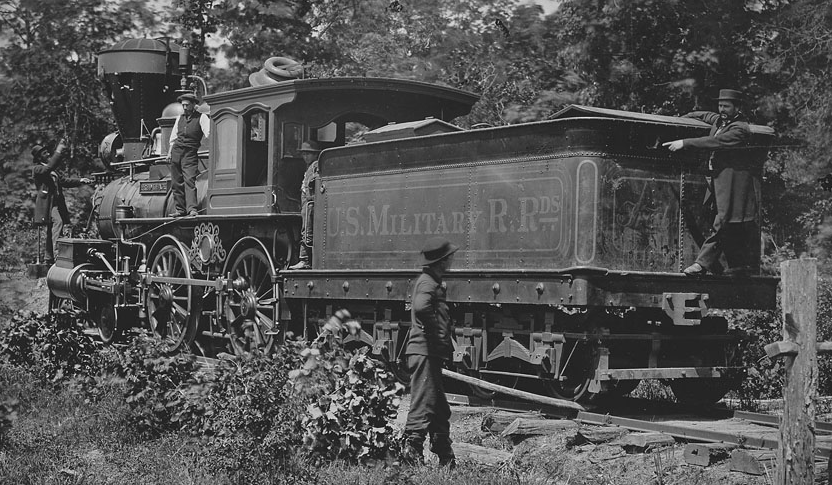
locomotive Fred Leach on the Orange and Alexandria Railroad near Union Mills, Virginia
Source: National Archives, Working Magic with Cornstalks and Beanpoles

locomotive Fred Leach on the Orange and Alexandria Railroad near Union Mills, Virginia
Source: National Archives, Working Magic with Cornstalks and Beanpoles
The Federal Government created the US Military Railroad (USMRR) to organize, operate, maintain, and repair railroads seized in Southern States during the Civil War. It centralized expertise, created innovative solutions to unique circumstances, and provided reliable service to the armies it supported.
In contrast, the Confederate government never created a strong focal point to ensure effective transportation by the southern railroads. The culture of the Confederacy was to support states rights, not to centralize power in a national government.
Part of the Confederacy's decentralized, fragmented approach included leaving each railroad under the control of its private owners. They maintained their priority of ensuring control over traffic, and resisted efforts to connect the lines in cities where terminals were just a short distance apart.
The US Military Railroad managed track and equipment which had been captured, so it was less concerned about the protection of private property and had no interest in perpetuating the inefficiencies of the Southern railroad network. After occupying Alexandria, the tracks of the Washington and Alexandria Railroad were connected to the tracks of the Orange and Alexandria Railroad.1
In December 1863, the US Military Railroad ran scheduled service between Alexandria and Brandy Station in Culpeper County. The Orange and Alexandria Railroad's single track, with sidings, was used for six northbound trains and six southbound trains each day. Four trains southbound and four trains northbound carried freight the 55 miles between the two points, on a 5 hour 45 minute trip. In addition to those "through supply trains," one other train in each direction was a "way supply train" stopping at intermediate points. There was also one passenger train going in each direction daily on a 2 hour 40 minute trip.2
Charles E. Fisher, "The U. S. Military Railroads," The Railway and Locomotive Historical Society Bulletin, Number 59 (October, 1942), p.60, https://www.jstor.org/stable/43519806 (last checked April 13, 2020)
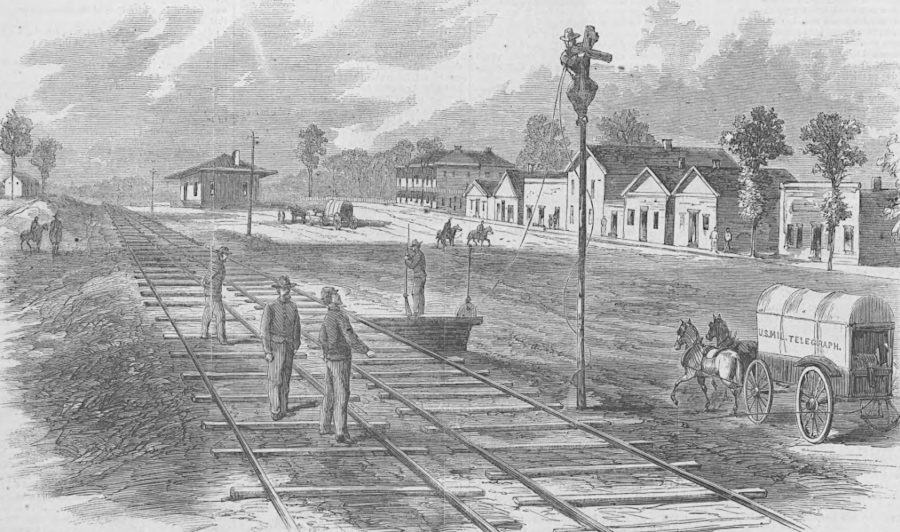
the US Military Railroad installed telegraph lines where it repaired southern railroads for use by the Union armies
Source: HathiTrust, Harper's Weekly, General Sherman's Campaign - Military Telegraph to Acworth, Georgia (July 9, 1864, p.444)
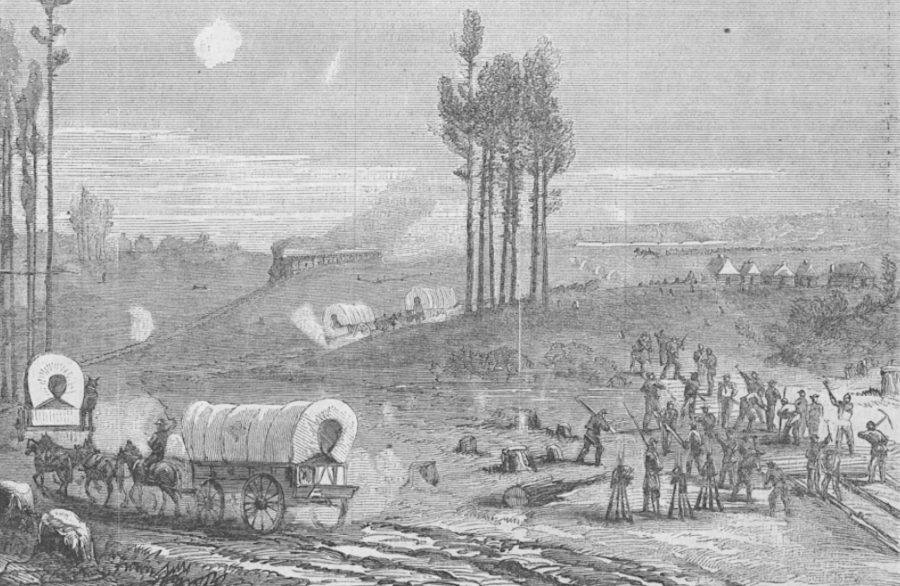
corduroy roads were built to move wagons with supplies from rail depots to army camps
Source: HathiTrust, Harper's Weekly, Soldiers Building Roads In Front Of Petersburg (November 5, 1864, p.712)
Initially the US Military Railroad operated in just Northern Virginia, using equipment leased from northern railroads, but soon began buying its own. Most of the 72 locomotives used at different times by the US Military Railroad in Virginia (and briefly in Maryland and Pennsylvania) were purchased. Five locomotives were captured equipment. Two came from the Alexandria and Washington Railroad, two from the Orange and Alexandria Railroad, and one from the Seaboard and Roanoke Railroad.

Confederates were able to destroy bridges constructed by the US Military Railroad
Source: Library of Congress, Genl. Haupts bridge over Potomac Creek--Va., destroyed by the Rebels (by Alfred R. Waud, c.August 1863)
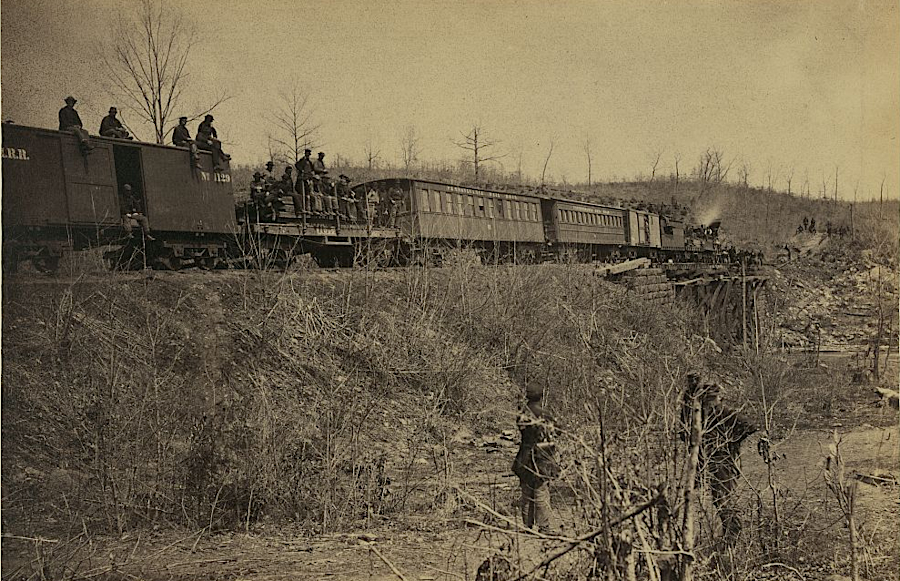
the US Military Railroad operated on tracks of the Orange and Alexandria Railroad
Source: Library of Congress, First train across Bull Run Bridge, spring of 1863 (Andrew J. Russell, 1863)
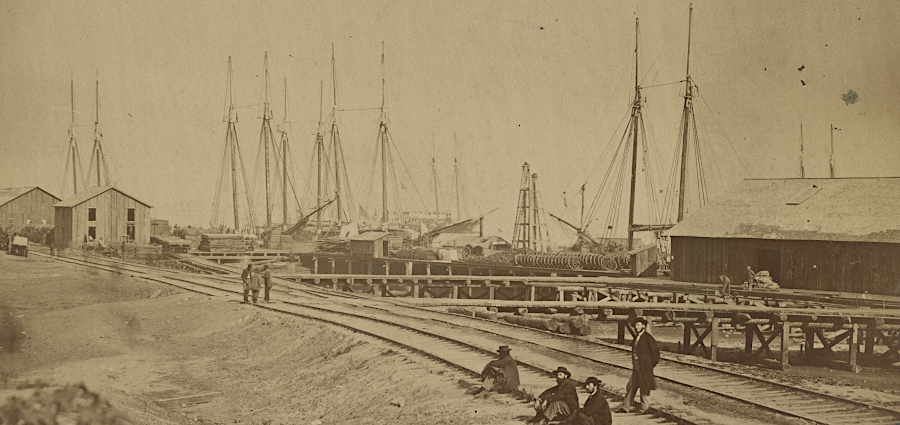
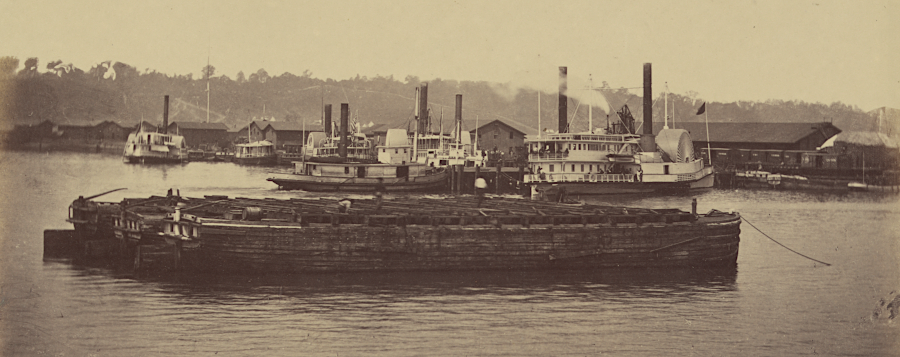
the supply base at Aquia Creek and its US Military Railroad infrastructure was abandoned by the Union Army in June 1863
Source: Library of Congress, Aquia Creek Landing, Evacuation of Aquia Creek (by T.H. O'Sullivan, June 1863)
The Richmond and York River Railroad was used to supply General McClellan's army during the Peninsula Campaign in 1862. Six locomotives were destroyed when the Union Army retreated from the outskirts of Richmond and McClellan changed his base of operations from the Pamunkey River to the James River. Five locomotives were lost on the Orange and Alexandria Railroad during the Second Manassas campaign, and three more were destroyed by Confederates while in use on that railroad at other times during the Civil War.
One of the largest US Military Railroad operations was the extension of the City Point Railroad in 1864-65, and support for the siege of Petersburg.
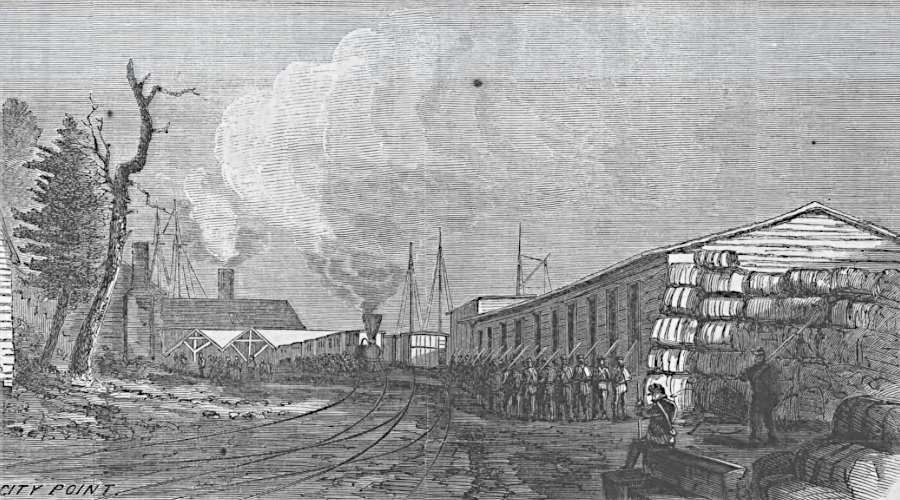
the US Military Railroad at City Point relied upon ships to deliver supplies to the James River wharves
Source: HathiTrust, View of the stations of Grant's military railroad (December 24, 1864, p.821)
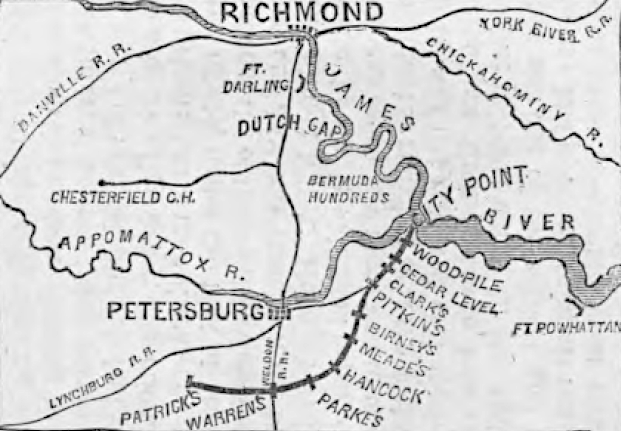
the US Military Railroad extended the City Point Railroad and established daily operations from the City Point wharves to 10 stations
Source: HathiTrust, View of the stations of Grant's military railroad (December 24, 1864, p.821)
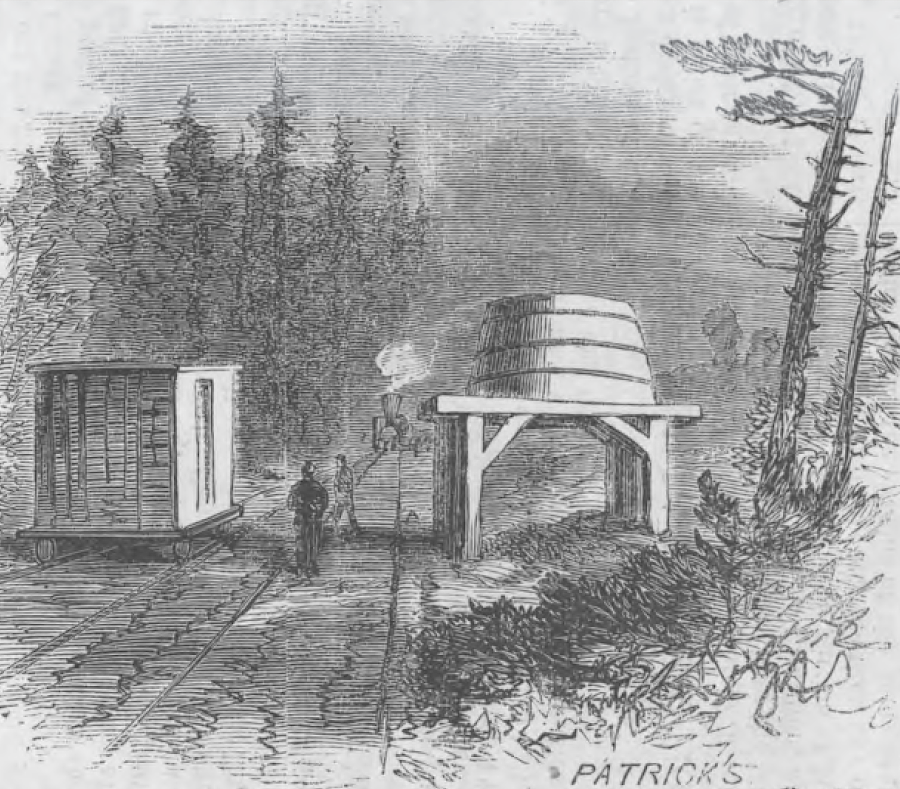
the US Military Railroad extended the City Point Railroad along the siege line west, across the Petersburg (Weldon) Railroad, to Patrick's Station
Source: HathiTrust, View of the stations of Grant's military railroad (December 24, 1864, p.821)
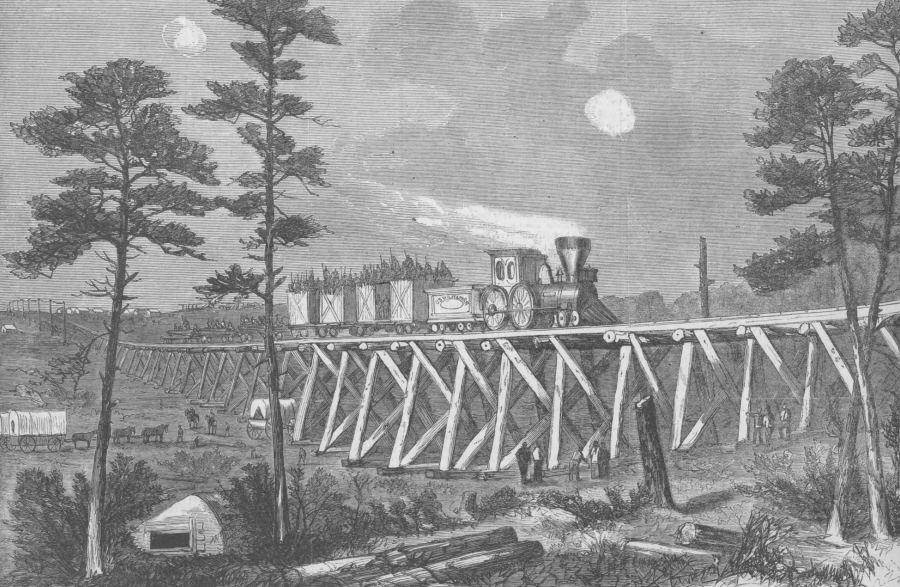
extending the City Point Railroad required building trestles across multiple streams in Prince George County
Source: HathiTrust, Harper's Weekly, View of United States Military Railroad Before Petersburg (November 5, 1864, p.712)
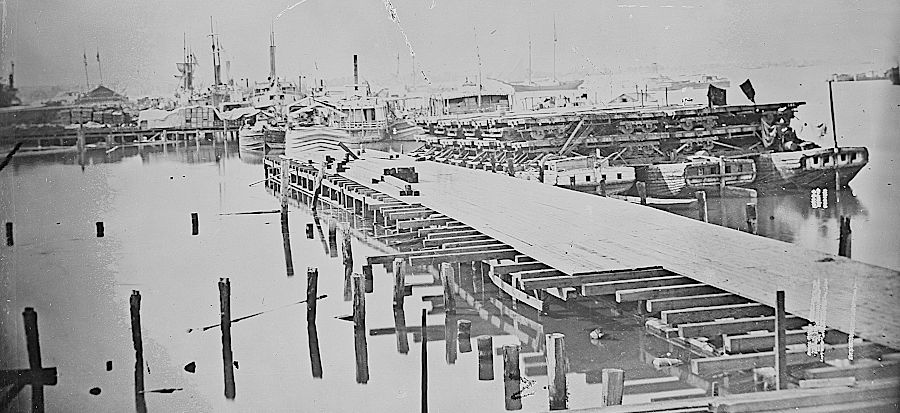
Union forces built a railhead on the Pamunkey River and used the York River Railroad to transport troops/supplies
Source: National Archives, Transports at landing, White House, Va. Railroad wharf under construction.
At the end of the war, three of the captured Virginia locomotives were returned to their southern railroad owners but two had been destroyed. The US Military Railroad sold the equipment it had purchased for cash, and the southern railroads restarted post-war operations using those locomotives and cars.3 Charles E. Fisher, "The U. S. Military Railroads," The Railway and Locomotive Historical Society Bulletin, Number 59 (October, 1942), p.60, p.67, p.70, https://www.jstor.org/stable/43519806 (last checked April 13, 2020)
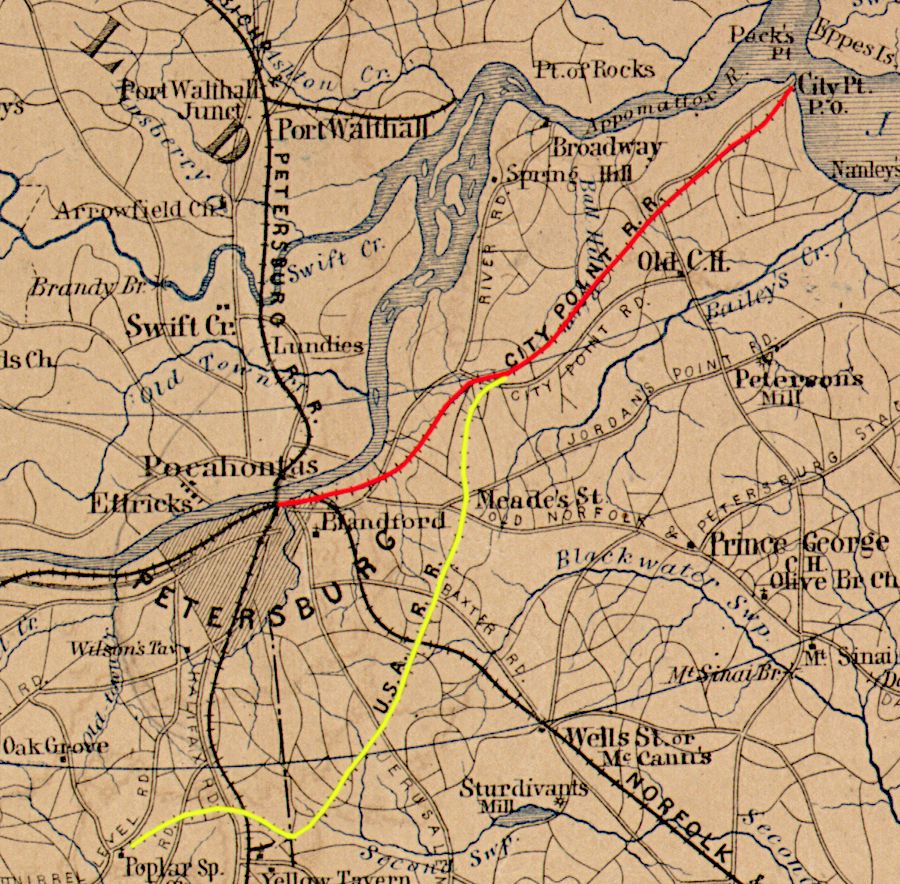
the US Military Railroad extended the City Point Railroad (red), building new track (yellow) outside the Confederate fortifications to supply Union forces during the siege of Petersburg
Source: Library of Congress, Thirty five miles around Richmond, Va (by Jedediah Hotchkiss, 1867)
Shipments of tanks, vehicles, and heavy equipment to bases or to seaports for exercises in foreign countries are handled by commercial railroad, but the US military continues to own and operate railroads on bases within Virginia.
After the Yorktown Naval Weapons Station was created in 1918, the facility was developed as one of the US Navy's major ordinance storage depots on the East Coast. The military built a complex web of tracks for moving the underwater mines, depth charges, and other ordinance stored there. The loading pier in the York River had tracks, so rail cars could be placed directly next to ships for loading/unloading.
The railroad track was renovated in the 1990's. It was removed, and locomotives and other equipment were sent elsewhere, after 2000. Even the switch with the CSX mainline has been eliminated.3
"That Army equipment moving by rail? Not a sign of looming martial law," Army Times, March 22, 2020, https://www.armytimes.com/news/your-army/2020/03/22/that-army-equipment-moving-by-rail-not-a-sign-of-looming-martial-law/; "Eastern Railroad Discussion - Naval Weapons Station Yorktown RR?," July 27, 2017, TrainOrders.com, https://www.trainorders.com/discussion/read.php?2,3139212; "Yorktown Naval Weapons Station," Railroad.net https://railroad.net/viewtopic.php?t=166499;
(last checked July 12, 2020)
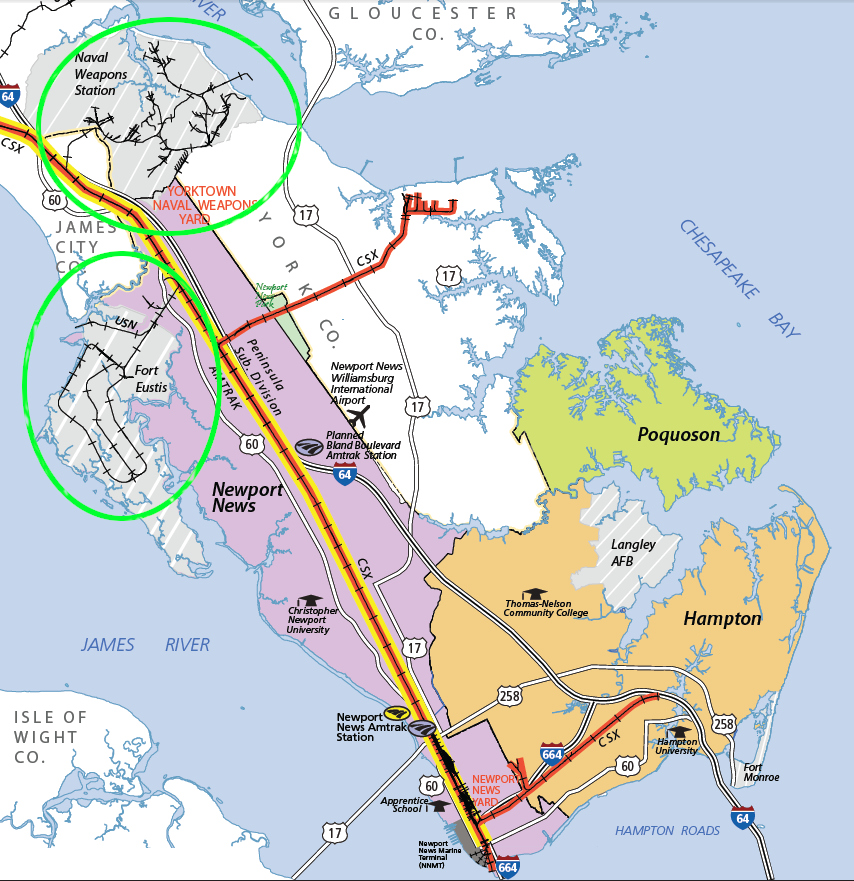
the US military built a network of tracks at Fort Eustis and the Yorktown Naval Weapons Station
Source: Virginia Department of Rail and Public Transportation, Virginia State Railroad Map (2019)
Fort Eustis was the site for training US Army personnel in transportation logistics and how to move equipment using railroads in other countries. After Base Closure and Realignment (BRAC), Fort Eustis was combined with Langley Air Force Base to become Joint Base Langley-Eustis. The railroad-related mission was transformed in 2015, after assessing the failure to utilize the railroad system in Iraq effectively.
The US Army stopped training reservists to repair track, or to operate and maintain diesel locomotives. The new focus was to train them to deal with railroad strategy, and to serve as advisors in a host country in which troops may be deplyed.3
"Army railroaders undergoing dramatic change," US Army, August 13, 2015, https://www.army.mil/article/153773/army_railroaders_undergoing_dramatic_change (last checked July 12, 2020)
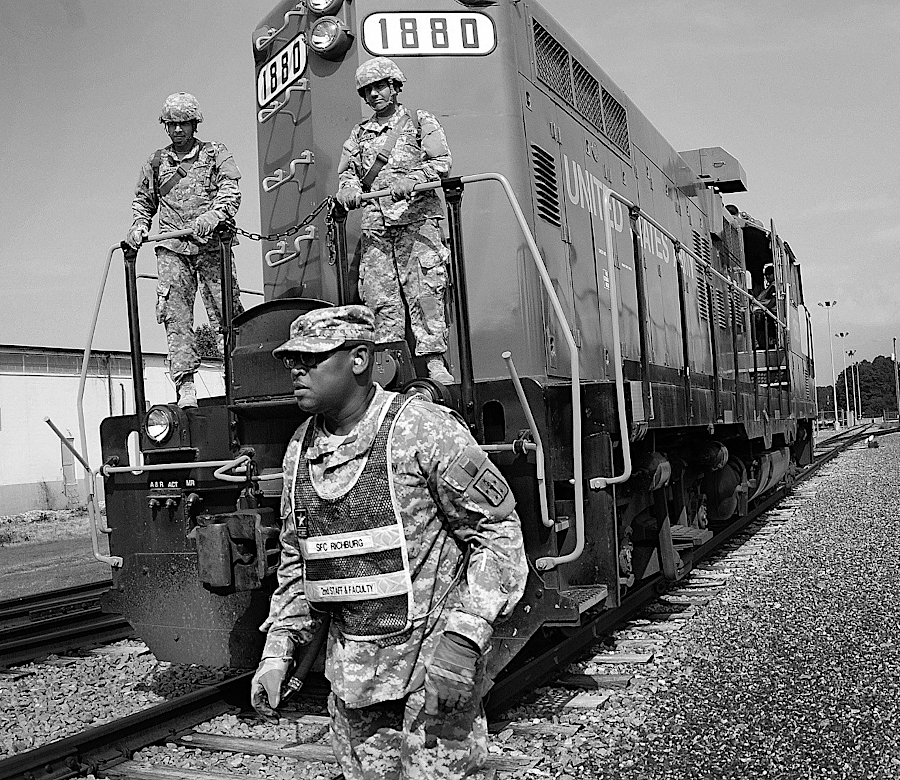
the Fort Eustis Military Railroad was used to train generations of US Army railroaders
Source: US Army, Army railroaders undergoing dramatic change
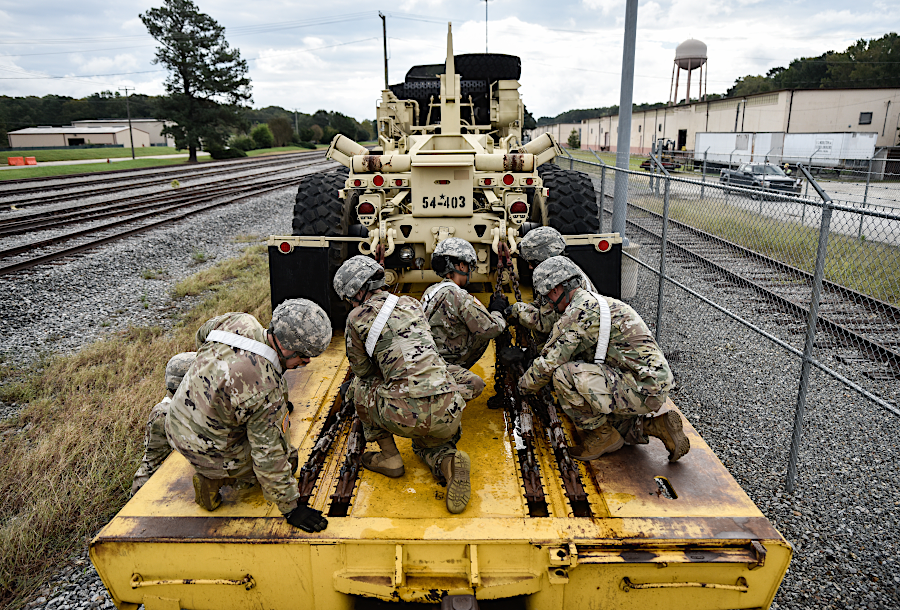
rail load operations during a training exercise at Joint Base Langley-Eustis in 2018
Source: Joint Base Langley-Eustis, Photos
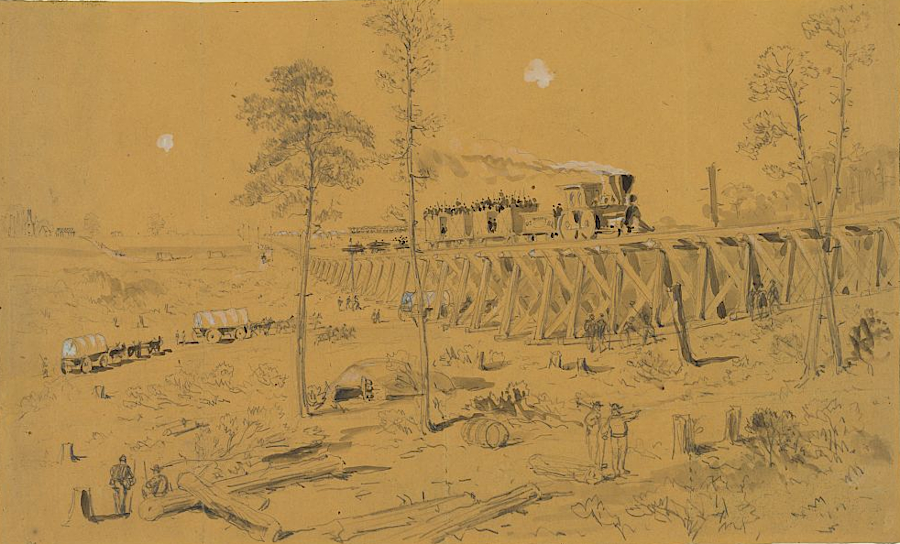
the US Military Railroad supplied Union forces during the siege at Petersburg
Source: Library of Congress, View on the U.S. Military R.R. in front of Petersburg (by William Waud, 1864)
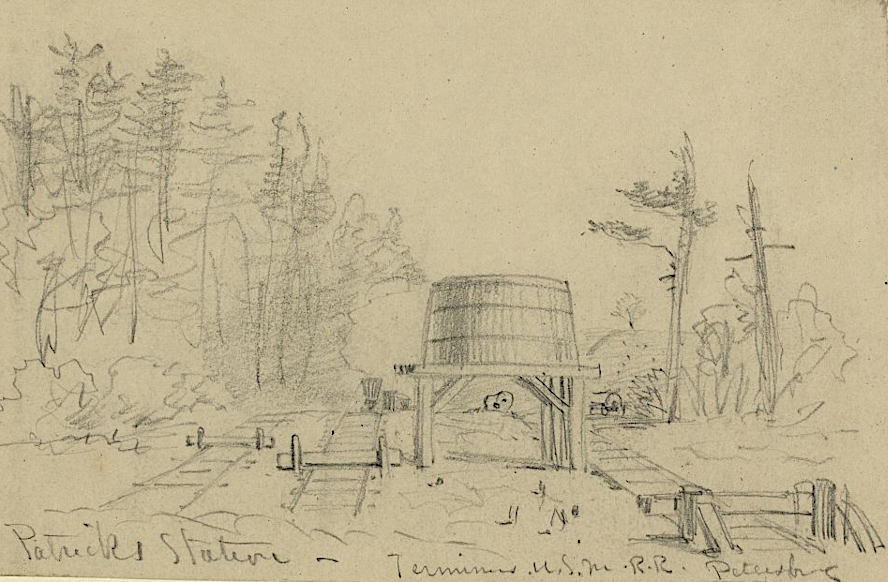
from City Point, the US Military Railroad ended at Patricks Station
Source: Library of Congress, Patricks Station. Terminus U.S.M.R.R. Petersburg (by Alfred R. Waud, 1864)
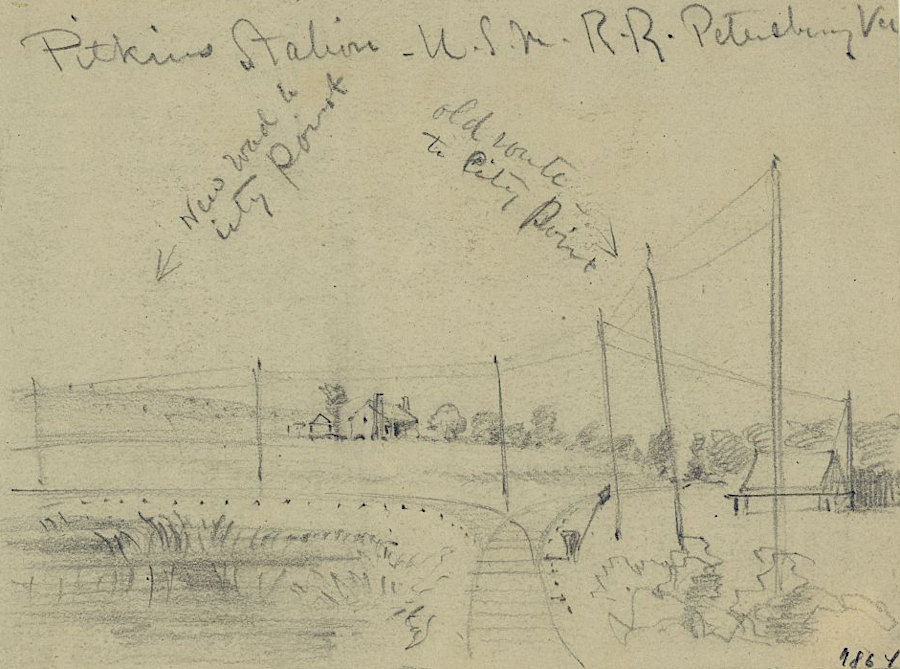
the US Military Railroad built a new track from Pitkins Station to City Point
Source: Library of Congress, Pitkins Station U.S.M. R.R. Petersburg, Va. (by Alfred R. Waud, 1864)
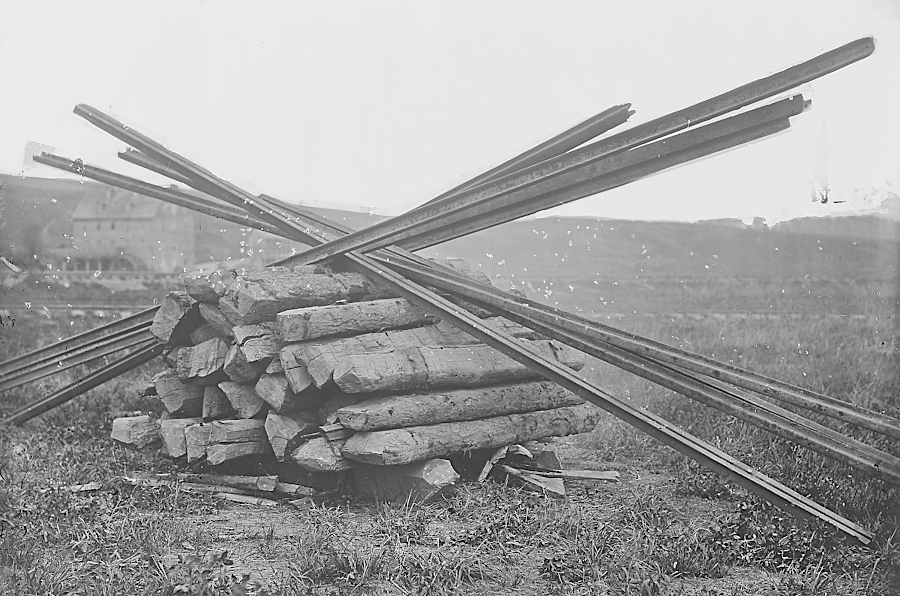
trails were heated and then twisted, preventing a quick repair by simply reinstalling track
Source: National Archives, Confederate method of destroying railroads, at McCloud Mill, Va., 1863
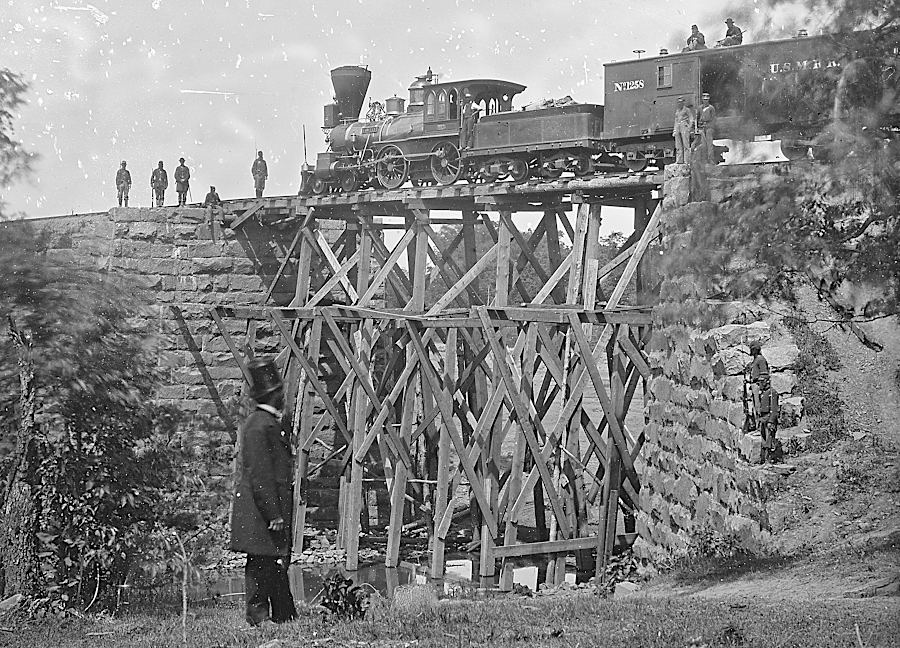
the US Military Railroad rebuilt track and bridges in order to use the Orange and Alexandria Railroad to supply Union forces during the Civil War
Source: National Archives, Cars of U.S. Military R. R., and bridge built by Soldiers. Orange and Alexandria R. R.
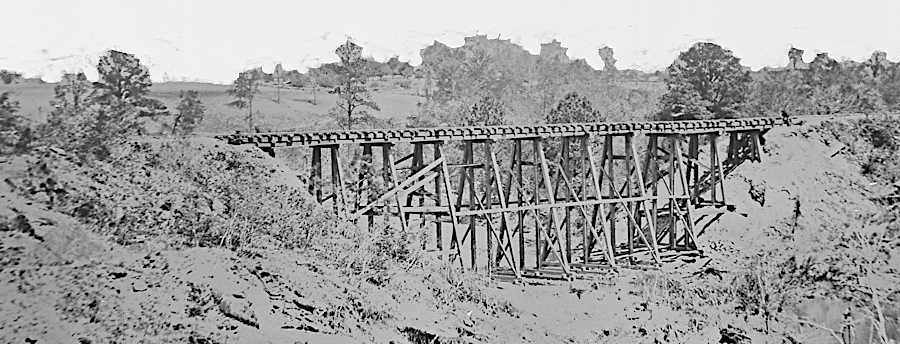
the US Military Railroad built temporary trestles from nearby wood, because fast restoration of service was more important than long-term maintenance concerns
Source: National Archives, Trestle on railroad
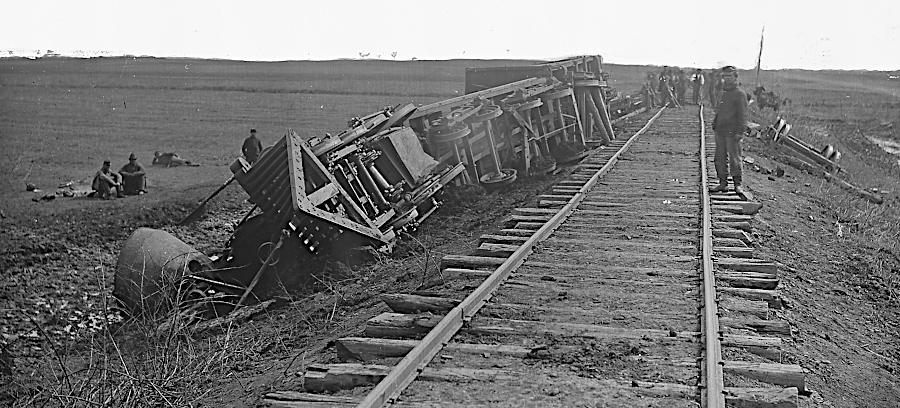
the US Military Railroad had plenty of replacement locomotives, in contrast to the railroads in the Confederate states
Source: National Archives, Picking up debris of trains after Pope's retreat. Second Battle of Bull Run.
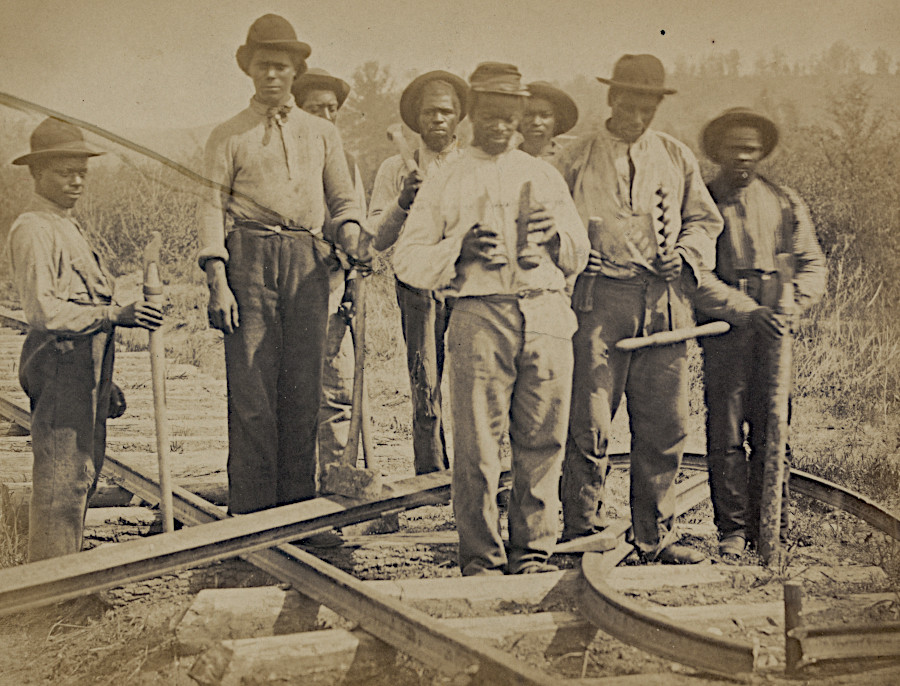
when Confederates destroyed track, the US Military Railroad obtained local labor for repairs
Source: Library of Congress, Military railroad operations in northern Virginia: men standing on railroad track (by Andrew J. Russell, 1862-63)